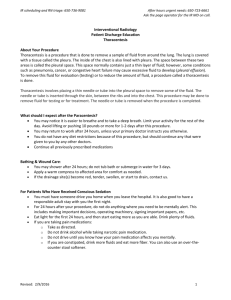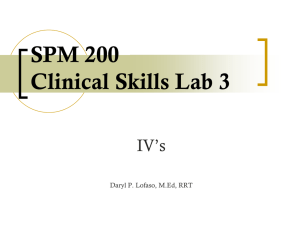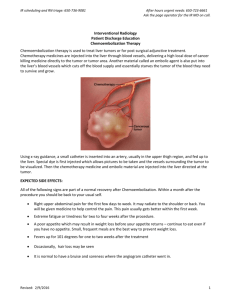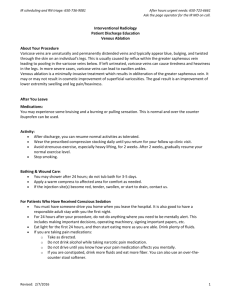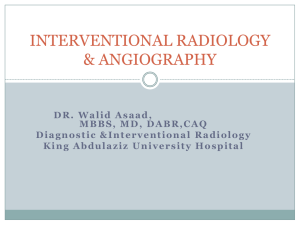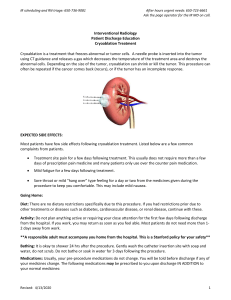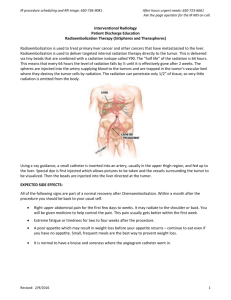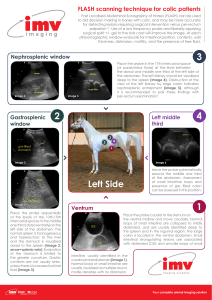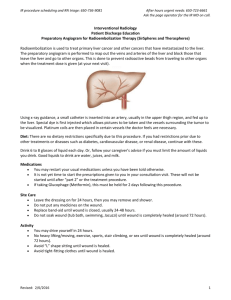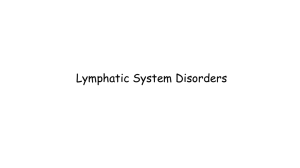Paracentesis Discharge
advertisement
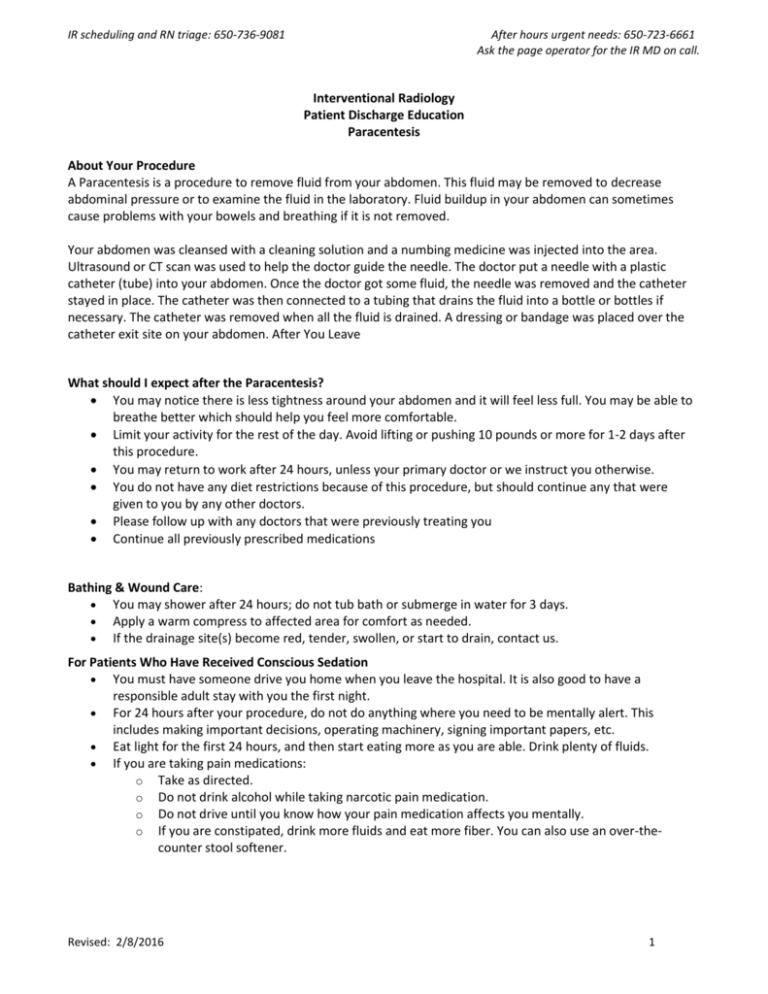
IR scheduling and RN triage: 650-736-9081 After hours urgent needs: 650-723-6661 Ask the page operator for the IR MD on call. Interventional Radiology Patient Discharge Education Paracentesis About Your Procedure A Paracentesis is a procedure to remove fluid from your abdomen. This fluid may be removed to decrease abdominal pressure or to examine the fluid in the laboratory. Fluid buildup in your abdomen can sometimes cause problems with your bowels and breathing if it is not removed. Your abdomen was cleansed with a cleaning solution and a numbing medicine was injected into the area. Ultrasound or CT scan was used to help the doctor guide the needle. The doctor put a needle with a plastic catheter (tube) into your abdomen. Once the doctor got some fluid, the needle was removed and the catheter stayed in place. The catheter was then connected to a tubing that drains the fluid into a bottle or bottles if necessary. The catheter was removed when all the fluid is drained. A dressing or bandage was placed over the catheter exit site on your abdomen. After You Leave What should I expect after the Paracentesis? You may notice there is less tightness around your abdomen and it will feel less full. You may be able to breathe better which should help you feel more comfortable. Limit your activity for the rest of the day. Avoid lifting or pushing 10 pounds or more for 1-2 days after this procedure. You may return to work after 24 hours, unless your primary doctor or we instruct you otherwise. You do not have any diet restrictions because of this procedure, but should continue any that were given to you by any other doctors. Please follow up with any doctors that were previously treating you Continue all previously prescribed medications Bathing & Wound Care: You may shower after 24 hours; do not tub bath or submerge in water for 3 days. Apply a warm compress to affected area for comfort as needed. If the drainage site(s) become red, tender, swollen, or start to drain, contact us. For Patients Who Have Received Conscious Sedation You must have someone drive you home when you leave the hospital. It is also good to have a responsible adult stay with you the first night. For 24 hours after your procedure, do not do anything where you need to be mentally alert. This includes making important decisions, operating machinery, signing important papers, etc. Eat light for the first 24 hours, and then start eating more as you are able. Drink plenty of fluids. If you are taking pain medications: o Take as directed. o Do not drink alcohol while taking narcotic pain medication. o Do not drive until you know how your pain medication affects you mentally. o If you are constipated, drink more fluids and eat more fiber. You can also use an over-thecounter stool softener. Revised: 2/8/2016 1 IR scheduling and RN triage: 650-736-9081 After hours urgent needs: 650-723-6661 Ask the page operator for the IR MD on call. Follow-up visit information Call your liver doctor or primary care doctor after discharge for a follow-up appointment if you don’t already have one. Follow up with Interventional Radiology is not routinely necessary. When to Get Medical and Emergency Help: Call our RN triage line at 650-736-9081: Temperature greater than 101 degrees. Increasing redness, swelling or drainage from the abdominal access site. Increasing or new abdominal pain. Go to your nearest Emergency Room: Bleeding or drainage from the needle site that is saturating the Band-Aid. You have shaking chills or a temperature over 102°F Interventional Radiology Contact Information Office Hours 8:00 am - 4:30 pm Post procedure questions and RN Triage: Phone: 650-736-9081 Fax: 650-736-7734 Email: irprocedure@stanfordmed.org – non urgent concerns only For all After Hours Urgent/Emergent issues: Call the Stanford Page Operator: 650-723-6661 Ask for the IR MD ON Call (pager # 27237) Revised: 2/8/2016 2
